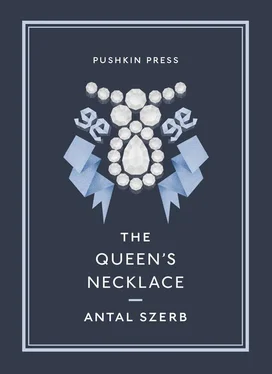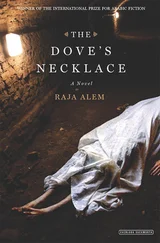All this virtue and good-heartedness was of course principally to be found on the stage and in books. A great many people found it absurd. Amongst them was a Hungarian contemporary, György Alajos Szerdahely, the Jesuit father and Latin poet. Satirical Verses for our Times is the title of his poem, “which celebrates nothing so much as the love of one’s fellow man”:
Nullum odium, nulla est dissentio, nulla simultas.
Aurea Saturni tempora Phoebe vehis!
Otia securae ducant mollissima Gentes.
Est sincera fides, regnat amicitia.
Estne? vel esse potest, qui non loqueretur Amorem?
Cor riget at sermo totus Amore calet.
No hatred or dissension, no envy or rivalry.
Apollo, you have restored the golden age of Saturn!
Secure nations live in sweet tranquillity.
Faith is sincere, and amity rules.
Is there, could there possibly be, anyone, who does not speak of love?
Their hearts are cold, yet all their talk is aglow with love.
Thus Szerdahely. But we must not be untruthful. The age did love and cultivate charity, and actually practised it. The relevant French word ‘ bienfaisance ’—doing good — is itself a product of the times. It is significant that in its derivation and morphology it recalls ‘ bienséance ’, meaning ‘courtesy’. The two concepts were connected at the time. We know how charitable the royal family could be. The Dauphine would jump down from her carriage and rush to the aid of an injured postillion or a peasant who had been wounded by a stag. The King and the Comte d’Artois would help pull a transport wagon out of the mud. In the severe winter of 1784 the royal couple gave enormous sums to the needy from their personal allowances — the King three million livres and the Queen 200,000. Similar deeds were performed by the Court aristocracy.
Mme de Genlis and the Duc de Lauzun, who was notorious for his cynicism, founded the Order of Perséverance —Steadfastness — which soon acquired ninety noble members. To be accepted, one had to solve a riddle, to answer a question on morality and give a talk on one of the virtues. Every knight or lady who uncovered and reported three authenticated acts of virtue received a gold medal. Every knight had a chosen ‘brother in arms’, and every lady a ‘friend of the heart’. And each had their own motto, which hung in the Temple of Honour, at the centre of Lauzun’s park.
It became the fashion for landowners every year to crown a village girl with garlands if she distinguished herself by her innocence and virtue.
And even the Academy, that austere marketplace of cool scholarship and ethereal art, could not stand aloof from charity. “It appears,” says Grimm, “that the example of Christian virtue now has a rival, and Philosophy strives equally to shine in the doing of good deeds, in its charitable institutions and pious foundations.” He made this remark in 1782, when announcing the Montyon Prize. The enormously rich Baron Montyon, the Comte de Provence’s chancellor, had set up a fund of 12,000 francs with the idea that every year the Academy would reward the man or woman of lowly origins who had performed the most virtuous action in the last twelve months. He also offered a prize to the person who had in the same year written the most morally improving work of literature. It was said, Grimm chuckles, that the lower classes of Paris were so enraged by the way the Academy had begun to exceed its powers that they set up a prize for the best madrigal of the year.
The Montyon medal was first won, in 1783, by a woman called Lespanier, who had spent two years nursing the ‘Comte’ de Rivarol, during which time she not only received no fee, but sacrificed her own fortune and whatever other funds she could raise on credit, for her patient. The Academy thus made adroit use of the prize to humiliate Rivarol, who only the year before had written a savage critique of the poetry of the celebrated Abbé Delille.
The following year, in the presence of the Prussian Duke Henrik, brother of Frederic the Great, Marmontel gave the prize to another woman who had nursed someone at her own expense, and in 1785 it went to a certain M Poultier, who had refused a legacy of 200,000 livres and persuaded the person planning to leave it to him to bequeath it instead to his natural heirs. M Poultier then gave further evidence of his generosity by making a gift to the value of the medal to a concierge who had done the same as he had some twelve months before (the terms of the foundation allowing it to reward only deeds done in the current year). At the same meeting Marmontel announced that a person of high rank who wished to remain anonymous had donated a gold medal worth 3,000 livres to reward the poem which, in the view of the Academy, most worthily celebrated the self-sacrifice of the Duke of Brunswick, who had died in the river Oder trying to rescue two peasants from drowning.
Taine explains the prevailing sensibilité of the second half of the eighteenth century as the result of people looking for some sort of compensation for everything that had been denied them under the cold rationalism and severe neoclassical tastes of the years dominated by the Court. They could no longer bear the spiritual aridity (to which the French mind has a strong tendency, though Taine does not mention this), but the reaction was taken too far, and began to foster sentimentality. “At that moment,” writes Taine, “as this particular world approached its end, some degree of fellow-feeling, a softening of the emotions, came into being, and, like the flaming colours and ethereal mists of autumn, dissolved the severity that still lingered in the arid spirit of the age, bathing the elegance of its final moments with the scent of dying roses.”
But sentimentality was not a uniquely French phenomenon — it prevailed even more strongly in Germany and England. So it is not possible to see it as simply a reaction against French aridity. On the one hand, that reading does not properly explain why, in France, it took so essentially practical and moral a form, and was so concerned with love of one’s fellow man. A more satisfactory account lies in the second, more current, explanation, which argues that since the Enlightenment had undermined the basis of religion, and thus the moral code that depended on it, it became necessary to provide something to guide people through life, and in consequence people discovered social morality, altruism and philanthropy. The transcendent love of one’s fellow man was replaced by an immanent sense of fellow-feeling, whose practitioner helps others for the sake not of God, but of man.
However it was, and however amusing the simpler manifestations of that charitable impulse might have been, there is no doubt that the late eighteenth century had discovered for the Western world what can be called social values in the modern sense. Of course it was hardly by chance that the virtue of charity emerged among the privileged classes precisely at a time when the underprivileged were feeling ever more dissatisfied with the social arrangements. The two forces were linked together. The upper classes came to realise that members of the lower orders were human beings too, whereupon the self-esteem and yearning for equality simply increased among the latter, thus preparing the way for the Revolution.
So, in the final analysis, the origins of this cult of sensibility lay in the guilty conscience of the privileged classes. The situation greatly resembles the last half-century of the Russian Tsars. In Russia too the upper strata came to feel a deep ‘Slavic’ compassion for the lower orders, at precisely the moment when growing industrialism was starting to promote self-respect among the bourgeoisie and a growing resentment among the proletariat. In Russia too, it was the aristocratic writers, Turgenev and Tolstoy, who wrote the finest works expressing pity for the people. So the Tsars too were brought down by their own guilty conscience. It is possible to see similar symptoms in the English literature of the twenties and thirties, perhaps most strongly of all in the later writings of Galsworthy, which deal with the upper bourgeoisie and their troubled consciences, though we have of course yet to see any of the developments anticipated by those particular omens.
Читать дальше












